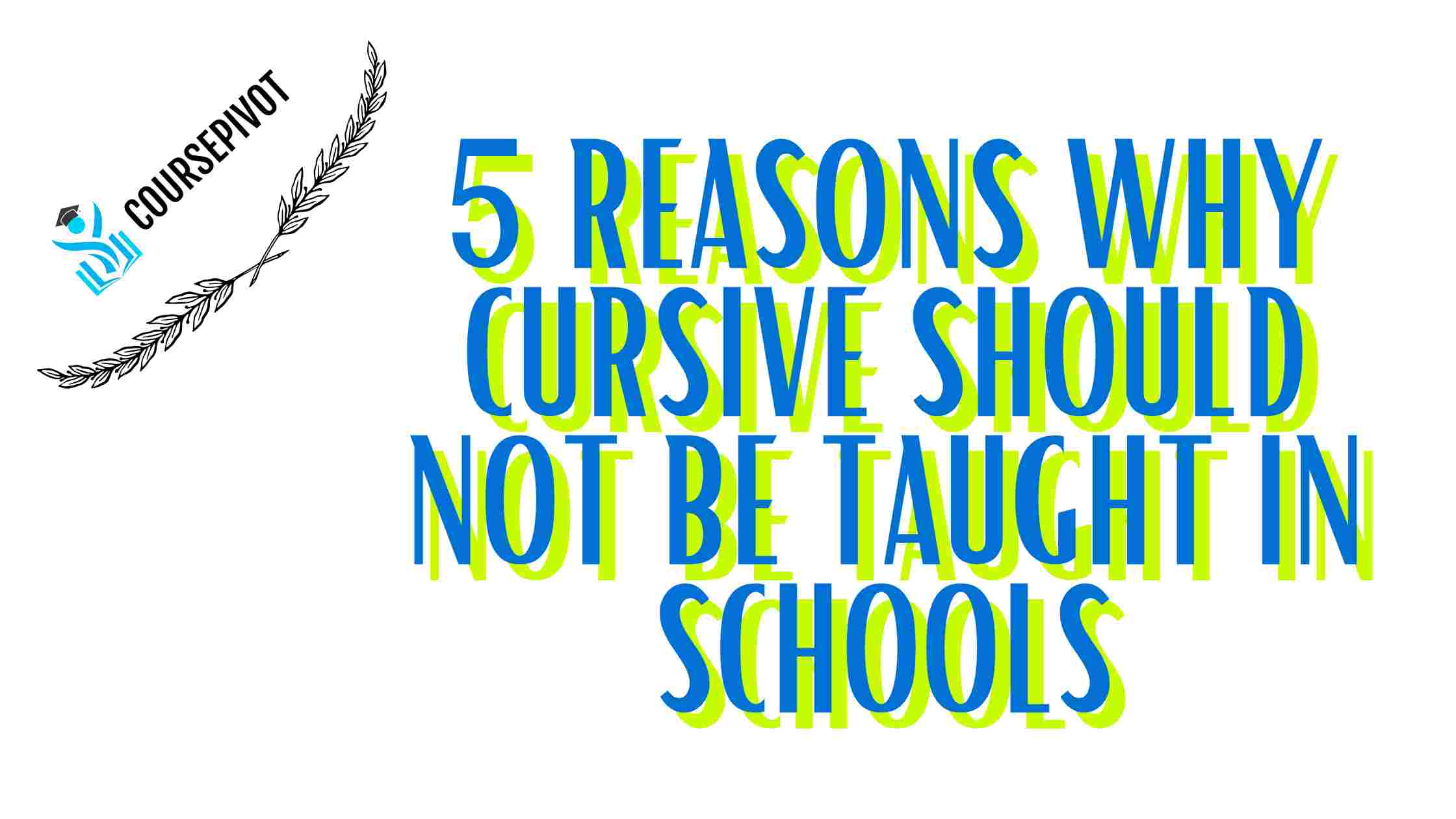5 Reasons Why Cursive Should NOT Be Taught in Schools

I’ll say it — I never liked cursive. Not as a kid, not as an adult. And while there’s something undeniably elegant about a handwritten signature or a beautifully penned letter, I can’t help but feel like teaching cursive in modern schools is… well, outdated.
5 Reasons Why Cursive Should NOT Be Taught in Schools
- 1️⃣ Cursive is not relevant in the digital age
- 2️⃣ It slows down more than it helps
- 3️⃣ Most adults don’t even use it
- 4️⃣ It eats up time better spent on real-world skills
- 5️⃣ It’s not the only way to build discipline or fine motor skills
When I look at today’s classrooms and what students actually need to thrive in the real world, I wonder: why are we still using valuable time to teach a handwriting style that most people never use beyond their signature?
So here’s why I think we need to let cursive go — or at least stop pretending it’s a crucial skill for the next generation.
Read our trending blogs here:
1️⃣ Cursive Is Not Relevant in the Digital Age
Let’s be real — kids today are growing up on keyboards, not lined paper. Most of their assignments are typed. Even exams are moving online.
I write emails, texts, blog posts (hi 👋), and professional reports all using a keyboard. The ability to type fast and efficiently is way more valuable than learning how to loop a cursive “z” — which, by the way, still looks like a mystery symbol to me.
Digital communication is the norm now. So shouldn’t we spend more time helping students master skills that match the times?
2️⃣ It Slows Down More Than It Helps
When I was learning cursive, it felt like everything suddenly took longer. I had to pause and remember how to shape each letter. It wasn’t smooth or natural — and honestly, it got in the way of my creativity.
For many kids, especially those with learning differences or motor skill challenges, cursive just adds an unnecessary layer of difficulty. They already struggle with regular print — adding loops and slants just piles on more frustration.
Wouldn’t it make more sense to help them build clarity and confidence in their ideas, rather than perfecting a fancy script most people don’t use?
3️⃣ Most Adults Don’t Even Use It
Be honest — when was the last time you wrote an entire paragraph in cursive?
Most adults I know print or type everything. Sure, there’s the occasional birthday card signed in cursive, but even that’s usually a hybrid of squiggles and print.
We don’t use it. We don’t rely on it. So why are we holding students to a standard we’ve long abandoned ourselves?
4️⃣ It Eats Up Time Better Spent on Real-World Skills
In a world where students are expected to learn coding, financial literacy, emotional intelligence, and critical thinking — why are we using classroom time to master a script from the 1800s?
We say we want students to be “career-ready” and “future leaders,” yet we prioritize cursive over skills like budgeting, job applications, or basic tech literacy. That doesn’t add up.
Time in school is precious. Every hour matters. I’d rather that time go toward something that will actually help them thrive in the real world.
5️⃣ It’s Not the Only Way to Build Discipline or Fine Motor Skill
I’ve heard the argument that cursive teaches discipline, patience, and fine motor skills. And sure, there’s some truth to that. But here’s the thing — so do art, music, journaling, or even learning to play an instrument.
We don’t need cursive to teach those qualities. In fact, there are more engaging and less frustrating ways to build those skills without requiring kids to master a dying writing style.
Let’s be honest: we can nurture focus and creativity in much better ways.
Let’s Move Forward, Not Backward
Cursive had its moment. It was elegant, stylish, and part of a different era. But we’ve evolved — and so should our classrooms.
Instead of clinging to tradition for tradition’s sake, let’s ask ourselves: What actually serves students today and tomorrow?
Spoiler alert: It’s probably not a curly alphabet that barely anyone uses anymore.
Cite this article
You can copy and paste your preferred citation format below.
Martin, L. & Arquette, E.. (2025, April 23). 5 Reasons Why Cursive Should NOT Be Taught in Schools. Coursepivot.com. https://coursepivot.com/blog/5-reasons-why-cursive-should-not-be-taught-in-schools/



